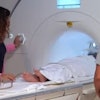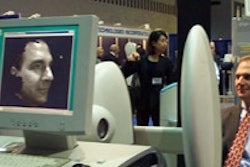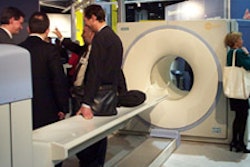CHICAGO - Handheld ultrasound scans had a sensitivity of 76% and a specificity of 97% for detection of free intraperitoneal fluid in patients with abdominal trauma, making it as good as cart-mounted US equipment but much more convenient, according to radiologists from Rhode Island Hospital and Brown University School of Medicine in Providence.
“The utility of ultrasound [for trauma] depends on immediate availability and whether it can be used during resuscitation,” said Dr. Don Yoo during a presentation at the RSNA conference on Wednesday. “It is especially important not to displace a trauma team from the bedside.”
In this study sample taken from December 1998 to July 1999, 125 patients referred for emergent abdominal sonography by the hospital’s trauma surgery service underwent bedside imaging with a 5.4-lb., 5 MHz transducer SonoSite device (Bothell, WA). A technique called Focused Abdominal Sonography in Trauma (FAST) was used, Yoo said. Patients who were hypotensive and did not respond to fluids were imaged with the handheld device.
The majority of patients, 55, were evaluated after motor vehicle crashes; nine has sustained injuries from falls; four from assaults; and there was one suicide attempt. CT was used as a standard of reference at least two hours after sonography. The exams were performed by radiologists between 8 am and 11 pm, and by radiology residents from 11 pm to 8 am.
“Using a five-point scan, all four quadrants and the pericardium were covered,” Yoo said. “These studies were intended to be completed in five minutes.”
According to the results, ultrasound found free fluid in five patients. Those same patients underwent CT scans, and the presence of intraperitoneal fluid was found in four of the patients. In addition, there were 27 patients who had no free fluid according to sonography; CT validated those results in 24 cases. CT scans on the remaining three patients did show the presence of free fluid, Yoo said.
In comparison, based on data from 110 exams done in the trauma unit between December 1999 and July 2000, conventional ultrasound had a sensitivity of 70% and a specificity of 98%, Yoo said.
Overall, 34 patients were treated and discharged based on their US results, Yoo said. Three patients died of injuries prior to the planned CT scan.
While these results did not reach statistical significance, the handheld device proved to be less intrusive during resuscitation and provided high-quality images, Yoo concluded. In addition, it was readily accepted by the radiology staff.
One session attendee noted that in the visual examples Yoo presented, the patients’ bladders were empty. Yoo said that while it is preferable to image with a full bladder, “often we don’t have any control of that. By the time we get into the trauma room, the bladder is already empty.”By Shalmali Pal
AuntMinnie.com staff writer
November 29, 2000
Copyright © 2000 AuntMinnie.com
Click here to view the rest of AuntMinnie’s coverage of the 2000 RSNA conference.
Click here to post your comments about this story.



















